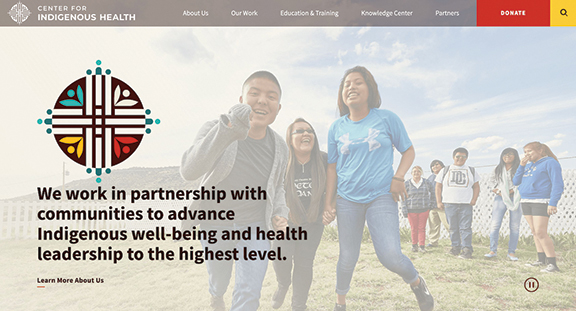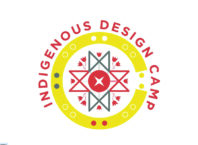By Lee Egerstrom
The Johns Hopkins Center for Indigenous Health has received a five-year, $12 million grant to work with tribes and urban groups to study how Indigenous culture can be used to support efforts dealing with substance abuse problems.
The award, called a “Center of Excellence” grant from the National Institutes of Health (NIH), was announced in December by its National Institute on Drug Abuse. This research effort is being led by Dr. Melissa Walls, co-director of the Baltimore-based Johns Hopkins health center and director of its Great Lakes Hub regional office in Duluth.
Which American Indian and Alaska Native (AI/AN) tribes and urban communities will collaborate on the research projects hasn’t been announced. The NIH grant creates a new Center of Excellence that will be known as CIRCLE – short for Community Driven Indigenous Research, Cultural Strengths and Leadership to Advance Equity in Substance Use Outcomes.
In an early announcement, Dr. Walls said substance use is frequently studied in Indigenous public health. But, she added, “Unfortunately, this focus has at times narrowly centered on deficits and risks, perpetuating stigma and stereotypes that bring harm to our communities.”
Walls is a first generation descendant of Couchiching First Nation and Bois Forte Band of Ojibwe. A sociologist, she has worked on health equity research with tribal nations in the U.S. and Canada since 2002 and moved from positions at the University of Minnesota-Duluth to the Johns Hopkins Great Lakes Hub in Duluth in 2019.
The initial announcement of the new NIH grant and formation of CIRCLE said three major studies will be launched with tribal and urban Indian organizations. One of them includes a long-term, follow-up project to study if a culturally tailored, evidence-based early childhood home visiting program reduces substance abuse, suicides and other consequences after Indigenous mothers and their children participate in a program.
Johns Hopkins has a program called Family Spirit. It is described as “an evidence-based and culturally tailored home visiting intervention delivered by Native American paraprofessionals as an Indigenous solution to supporting caregivers during pregnancy and early childhood. Caregivers gain knowledge and skills to achieve optimum development for their children across the domains of physical, cognitive, social-emotional, language learning, and self-help.”
A second study will start an intervention program to protect young AI/AN men from harmful substance use. That will be aimed of men in the 18 to 25 age group. Substance use prevention sciences have largely neglected young men approaching adulthood, the announcement said.
A third team research project will explore how tribal leaders can create harm reduction policies by examining how Indigenous communities can link harm reduction with traditional, community-supported approaches. It will study syringe services programs.
Evidence that Native communities can use help is not new. Research over the years by various public and private groups have documented disproportionate substance abuse problems among AI/AN communities.
West Coast researchers pointed out the need for culturally focused studies and programs in a frequently cited study from 2011. That study, entitled American Indians / Alaska Natives and Substance Abuse Treatment Outcomes: Positive Signs and Continuing Challenges, showed the need and potential for culturally focused programs.
The UCLA researchers and their collaborators documented how AI/AN have the highest rates of alcohol, marijuana, cocaine and hallucinogen use disorders among U.S. racial and ethnic groups. They also have the second highest methamphetamine abuse rates behind Native Hawaiians.
Almost as a prelude to what Johns Hopkins and its Great Lakes Hub researchers are doing, the UCLA connected research team made two key points:
“In spite of the high rate of substance abuse among AI/ANs, few studies have comprehensively analyzed the effectiveness of substance abuse treatments currently provided to this population.”
They added that given the known health-related disparities among AI/AN with substance abuse problems, there is an emergent need for providers and policymakers to understand the effectiveness of currently provided abuse treatments.
That California-based study pointed out AI/AN substance abuse is not totally a result of neglect. Academic, state health and nonprofit organizations throughout North America wrestle with these issues and seek better ways to serve Native health needs.
The federal government’s Indian Health Service (IHS) has specific programs targeting these needs. Within its Substance Abuse and Suicide Prevention (SASP) program, and its Substance Abuse Prevention, Treatment, and Aftercare (SAPTA) program, the health service works with and funds 130 tribal, urban Indian organizations (UIOs) and its own operating units on related programs and projects.
The Bemidji regional office for Indian Health Service for Midwest states lists two such projects.
One is with the Bay Mills Indian Community (Ojibwe) in Michigan that is implementing an Operation Resilience program aimed at protection from substance abuse and alternative services for both its Anishinaabe people and their surrounding community.
Another is the Mille Lacs Band of Ojibwe plan to serve its community here in Minnesota. IHS said that program is building a referral and collaboration system for improving its care coordination system.
This involves improving current substance use disorder (SUD) efforts by starting a youth-oriented program, starting a referral network aimed at reaching at least 15 more youth clients in need of SUD services, and similar efforts for what it calls its Opportunities for Youth Sober enrichment.
The health service described the Mille Lacs objectives as enabling the band to provide services for adolescents and their families through all stages of recovery.
All such efforts needs research and trained people on the ground.
The announcement of John Hopkins and its Great Lakes Hub plans for the CIRCLE program made that point by stressing it is “seeding Indigenous solutions” from a new crop of scientists. “CIRCLE will also support new and early-stage Indigenous and allied researchers to work on pilot projects to tackle substance use inequities in partnership with Indigenous communities,” it said.
Information from the National Library of Medicine story documenting AI/AN substance abuse can be found at https://www.ncbi.nim.gov/pms/articles/PMC3042549







